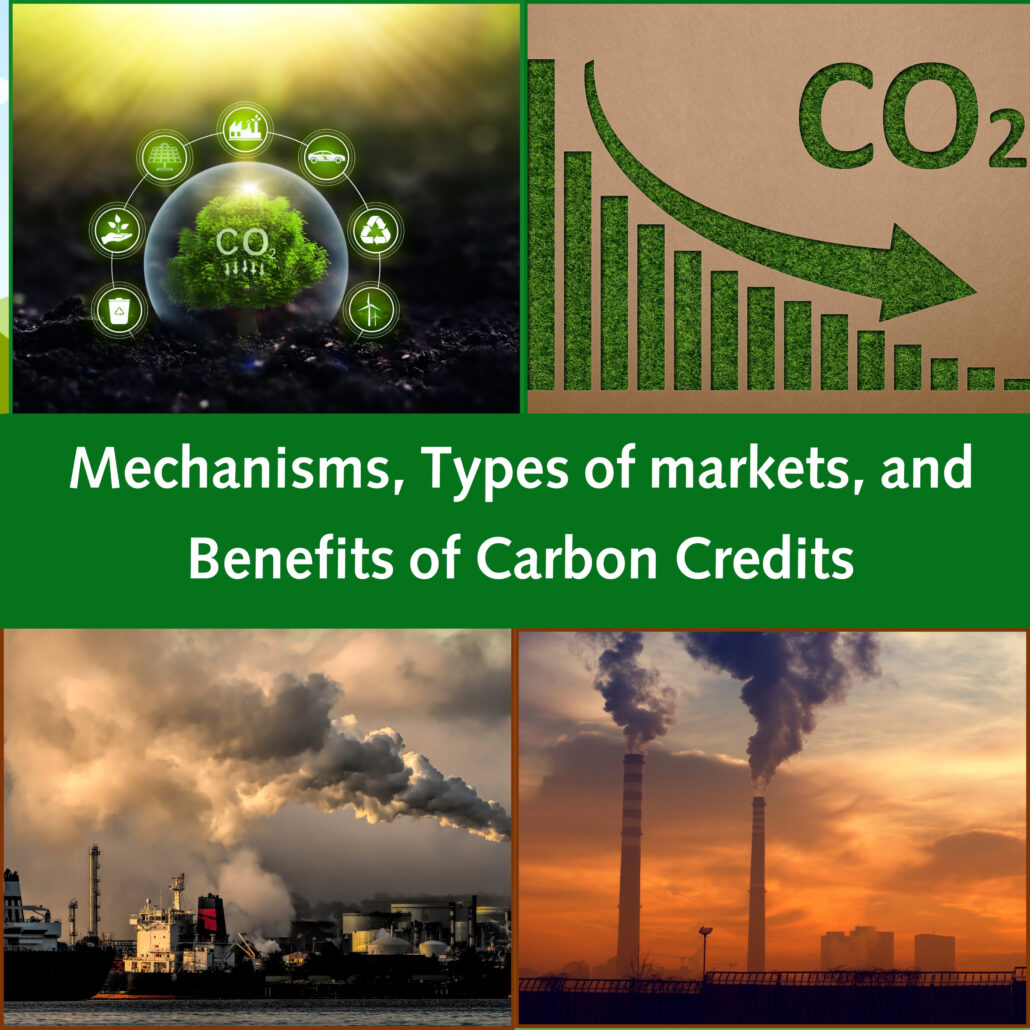
How Carbon Credits Fit into International Regulation
- Verification and Certification: Projects that generate carbon credits must undergo rigorous verification and certification processes to ensure that the emission reductions or sequestration are real, measurable, and additional (i.e., they would not have occurred without the project).
- Trading and Compliance: Carbon credits can be traded in international carbon markets. Countries and companies use these credits to comply with their emission reduction commitments under international agreements.
How Carbon Credits Work
Mechanism:
- Emission Reduction Projects: These projects can include reforestation, renewable energy (like wind or solar), energy efficiency improvements, methane capture, and more.
- Verification: Independent organizations verify the amount of CO2 reduced or captured by these projects. Once verified, the projects are issued carbon credits.
- Trading: These credits can be bought and sold in carbon markets. Companies or individuals can purchase credits to offset their own emissions.
Types of Carbon Markets
- Compliance Markets: These are regulated by governments. Entities that exceed their emission limits can purchase carbon credits to comply with legal requirements. Companies that do not use all their credits can sell the surplus to other companies in need, a system known as cap-and-trade. Examples include the European Union Emission Trading Scheme (EU ETS).
- Voluntary Markets: These markets operate outside of governmental regulations. Organizations and individuals can voluntarily purchase carbon credits to offset their emissions. These offsets often come from projects such as renewable energy, reforestation, or community development initiatives.
Benefits of Carbon Credits
- Flexibility: Allows companies to meet emission reduction targets in a cost-effective manner.
- Incentivizes Green Projects: Provides financial incentives for projects that reduce or sequester CO2.
- Global Impact: Encourages international cooperation in addressing climate change.
Types of Carbon Credits
Based on Project Types:
- Renewable Energy Credits (RECs):
- Represent the environmental benefits of generating electricity from renewable sources instead of fossil fuels. They support the development of renewable energy, such as solar, wind, or biogas-generated energy.
- Carbon Sequestration Credits:
- Derived from projects that remove CO2 from the atmosphere and securely store it. Examples include reforestation and carbon capture and storage (CCS) projects.
- Methane Capture Credits:
- Generated by projects that capture methane emissions from sources such as landfills, coal mines, or livestock operations. Capturing methane prevents this potent greenhouse gas from entering the atmosphere.
- Avoided Emissions Credits:
- Result from projects that prevent greenhouse gas emissions. For example, renewable energy projects that replace fossil-fuel-based electricity generation create avoided emissions credits.
Conclusion
Carbon offsetting through credits is regulated under international frameworks such as the Kyoto Protocol and the Paris Agreement, managed by the UNFCCC. These frameworks ensure that carbon offset projects meet strict standards for environmental integrity and contribute effectively to global emission reduction goals.